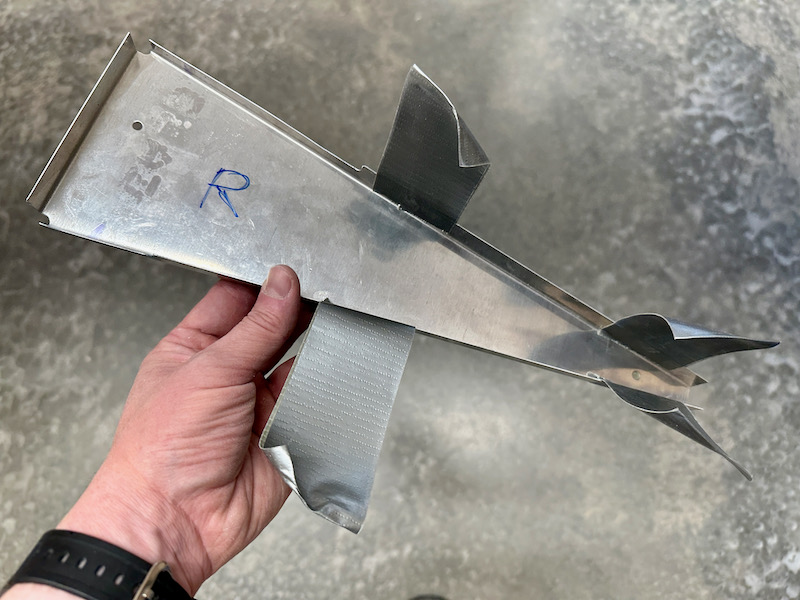I spent a couple evenings installing the eighty or so nutplates that will be used to attach the wingtips. Once again I slightly under-squeezed the rivets to avoid cracking the fiberglass, and I was none too picky about achieving countersinking perfection. These holes will all be hidden when in use, so as long as everything fits together and the nutplates are nominally attached, it will be good enough:

The Whelen nav/strobe heads are designed to be screwed to a mounting plate, which is in turn affixed to the wingtip. However, they don't give you much of a hole for the wiring, which is sort of annoying. I passed the wires through the mounting plates, then installed Deutsch DTM connectors, which will have to be de-pinned if I ever want to separate these components:

I have known about Deutsch connectors for a long time, but only recently picked some up to play with. Once you understand the installation process, these connectors are just as easy to use as Molex connectors, and are apparently vastly more reliable. Over time I'll probably replace any problematic Molex connectors with Deutsch, but I can't be bothered to go back and redo any of my old work at the moment.
I cut holes in the wingtips to allow the connector to pass through. Luckily this will be hidden behind the mounting plate, as will the extra hole I previously drilled to help with fitting the lenses:

I attached the mounting plates to the wingtips with large-area washers so the fiberglass won't crack. Since rough fiberglass is abrasive, I used some snake skin on the exposed wires to prevent chafing:

With zip ties, grommets, snake skin, and clamps, I cleaned up and secured the wingtip wiring. Later I realized that these might actually have been the very last wires I needed to finish on the whole airplane:

With nothing left to do to the wingtips, I aligned them to the control surfaces and drove in all the screws, then installed the lenses:

Here's a short video showing the airplane all lit up. The beast is beginning to stir…































